For centuries, humans have gazed up at the night sky, captivated by the cosmic dance of the planets. The alignment of these celestial bodies has sparked curiosity, wonder, and even mythological beliefs across cultures around the world. But what is the significance of planetary alignment? Is there any truth to the cultural interpretations surrounding these celestial events? In this article, we will explore the historical background, the mythical beliefs, and the diverse cultural interpretations of planetary alignment. We will delve into astrology, astronomy, and the impact of these alignments on human consciousness. Additionally, we will examine the controversies and skepticism surrounding these beliefs and look towards the future of planetary alignment studies. So, join us on a journey through time and space as we unravel the mysteries of planetary alignment.
Contents
- Historical Background
- Planetary Alignment in Mythology
- Planetary Alignment in Astrology
- Planetary Alignment in Astronomy
- Cultural Interpretations of Planetary Alignment
- Impacts on Human Consciousness
- Controversies and Skepticism
- Cross-Cultural Similarities and Differences
- The Future of Planetary Alignment Studies
- Conclusion
-
Frequently Asked Questions
- What is the significance of planetary alignment in mythology?
- Can planetary alignment predict future events?
- What is the difference between astronomy and astrology?
- Do all planets align in a straight line during planetary alignment?
- What are the cultural interpretations of planetary alignment in Eastern traditions?
- Are there any spiritual or mystical connections to planetary alignment?
- What are some scientific criticisms of planetary alignment beliefs?
- Are there any commonalities in the interpretations of planetary alignment among different cultures?
- How does planetary alignment impact human consciousness?
- What is the future of planetary alignment studies?
- References
-
Frequently Asked Questions
- What is planetary alignment?
- How often does planetary alignment occur?
- Do planetary alignments have any significant effects on Earth?
- What are some ancient beliefs and myths associated with planetary alignment?
- Can planetary alignments affect human behavior and emotions?
- How does astrology interpret planetary alignments?
- Are there observable planetary alignments that astronomers study?
- What are some cross-cultural interpretations of planetary alignment?
- What are some controversies surrounding planetary alignment beliefs?
- What does the future hold for planetary alignment studies?
- References
- Read More
Historical Background

Throughout history, humans have been fascinated by the movements of celestial bodies and their unique alignments in the night sky. The historical background of planetary alignment reveals the deep-seated significance and cultural interpretations associated with these celestial phenomena. Ancient civilizations, such as the Egyptians, Greeks, and Mayans, observed and recorded the patterns of planetary alignment, often attributing them to the influence of gods and divine forces. Early astronomers, including Ptolemy and Copernicus, made significant contributions to our understanding of planetary motion and alignment. These early observations laid the foundation for later developments in astrology and astronomy. To learn more about the composition of early solar systems, click here. The Ophiuchus constellation plays a crucial role in astrology, and you can find a guide to it here. In astrology, the fourth house is associated with home and family. To unravel the mysteries of the fourth house, click here.
The Influence of Ancient Civilizations
The influence of ancient civilizations on the belief systems surrounding planetary alignment cannot be overstated. From the Egyptians to the Mayans, these cultures attributed great significance to the alignment of celestial bodies. In Egyptian mythology, the alignment of certain planets with the pyramids was believed to be a cosmic validation of the pharaoh’s divine authority. The Mayans developed an intricate calendar system that meticulously tracked celestial movements, including planetary alignments, to determine auspicious times for various activities. These civilizations regarded the alignment of planets as messages from the gods or celestial events that held profound meaning for the fate of their societies. These beliefs shaped their religious practices, architectural designs, and even their daily lives. The profound influence of ancient civilizations on the interpretation of planetary alignment continues to resonate in contemporary astrology and cultural traditions.
Early Observations and Beliefs
In ancient civilizations, early observations of planetary alignment held great importance and were often intertwined with religious, spiritual, and mythological beliefs. The ancient Egyptians, for example, closely monitored the movements of celestial bodies and associated them with their deities. They believed that the alignment of the planets influenced various aspects of life, including fertility, agriculture, and the rulership of pharaohs. Similarly, the Greeks also had a deep fascination with the alignment of celestial bodies. They believed that the gods controlled the movements of planets and regarded these alignments as omens for events on Earth. In China, the alignment of celestial bodies was meticulously documented as early as the Han Dynasty. Chinese astrologers interpreted planetary alignments as a reflection of cosmic balance and crucial determinants of human destiny. In the Americas, the Mayans developed sophisticated calendars and believed that the alignment of celestial bodies played a significant role in their religious rituals and societal events. They observed and predicted celestial alignments with remarkable accuracy, which allowed them to align their temples and structures with astronomical precision. These early observations and beliefs laid the groundwork for further cultural interpretations and the development of astrology and astronomy as we know them today. By studying the alignments and patterns in the heavens, ancient civilizations sought to comprehend and connect with the mysterious forces that governed the universe.
Planetary Alignment in Mythology
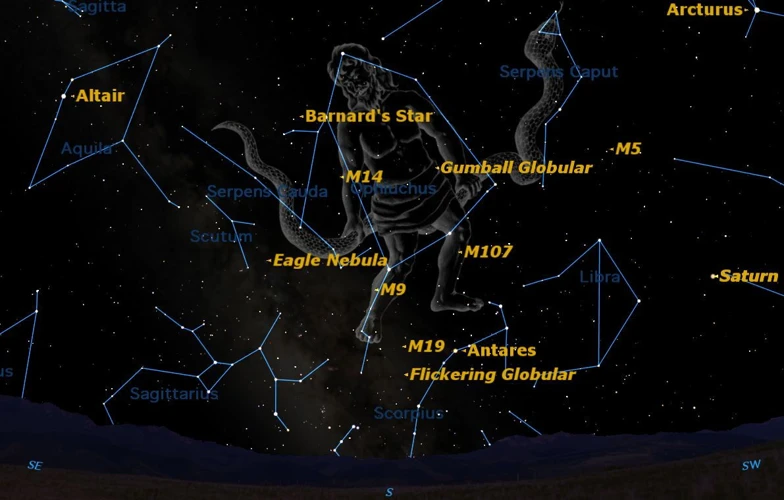
Planetary alignment has long held a significant place in mythology and the collective imagination of cultures worldwide. Gods and Cosmic Alignments have often been linked to the movement and positioning of celestial bodies. Ancient civilizations, such as the Greeks and the Egyptians, believed that planetary alignment reflected the interactions and alignments of these powerful deities, influencing events on Earth. Creation myths often incorporated celestial harmonies and alignments as a means of explaining the birth of the universe and the existence of life. These myths served as a symbolic representation of the cosmic forces at play in the world. The stories of gods and goddesses aligning with planets and stars captured the human fascination with the celestial realm and provided a cultural framework for understanding the mysteries of the universe.
Gods and Cosmic Alignments
In various mythologies and ancient belief systems, gods and cosmic alignments were intertwined. Different cultures across the world associated specific deities with celestial bodies and their alignments. For instance, in Egyptian mythology, the god Horus was closely linked to the Sun, representing its power and significance in the cosmos. The alignment of the Sun with other planets and stars was believed to symbolize divine harmony and the gods’ influence on earthly affairs. Similarly, in Greek mythology, the goddess Aphrodite was associated with the planet Venus, and her alignment with other celestial bodies was seen as an omen of love, beauty, and fertility.
In Norse mythology, Odin, the chief deity, was connected to the planet Mercury and was attributed with intelligence, knowledge, and communication. The alignment of Mercury with other planets was believed to have a profound impact on these aspects of human existence. In Hindu mythology, the alignment of planets such as Saturn (Shani) and Mars (Mangal) was considered significant, with each deity represented by these celestial bodies influencing different aspects of life, such as discipline, ambition, and courage.
The ancient Mayans had a sophisticated understanding of cosmic alignments. They built architectural structures and observatories aligned with the movements of the planets, particularly Venus. The Mayans believed that these alignments had spiritual and prophetic significance, influencing the fate of both individuals and civilizations.
Gods and cosmic alignments formed a rich tapestry of mythical beliefs across cultures. The perceived connections between deities and celestial bodies, and their alignments, provided an intricate framework for understanding the influence of divine forces on human existence. These beliefs not only reflected the cultures that held them but also demonstrated a universal fascination with the celestial realm and its impact on earthly affairs.
Creation Myths and Celestial Harmonies
Creation myths from various cultures often incorporate celestial harmonies as a fundamental aspect of their narratives. These myths attribute the alignment of planets to the creation of the world and the origins of life. In ancient Greek mythology, for example, the Titans and the Olympian gods were born from the union of Uranus (the sky) and Gaia (the earth). The Titans were cast into Tartarus, deep in the underworld, while the Olympian gods, led by Zeus, emerged as the dominant deities. This myth reflects the belief that the alignment of celestial bodies played a significant role in shaping the hierarchy and order of the cosmos.
In Hindu mythology, the story of the Trimurti – the trinity of Brahma, Vishnu, and Shiva – involves the alignment and harmonious interaction of these three deities to sustain the universe. Brahma, the creator, aligns with Vishnu, the preserver, and Shiva, the destroyer, to maintain cosmic balance. The alignment of these divinities symbolizes the cyclical nature of creation, preservation, and destruction in Hindu cosmology.
In Native American creation myths, celestial bodies are often associated with ancestral spirits and the balance between the spiritual and physical realms. For instance, the Hopi tribe believes that the Sun and the Moon, personified as Gods, align to create the seasons and guide the growth of crops. The precise alignment of celestial bodies is considered essential for maintaining the harmony and prosperity of the tribe.
These creation myths highlight the deep-rooted connection between planetary alignment and the origins of existence in various cultures. The belief in the harmonious interplay of celestial bodies represents a shared understanding of the cosmos as a complex system, where the alignment and interactions of planets hold immense significance in shaping the world and human destiny.
Creation myths and celestial harmonies are intricately intertwined, representing the cultural interpretations of planetary alignment as a cosmic symphony that influences the very fabric of existence.
Planetary Alignment in Astrology
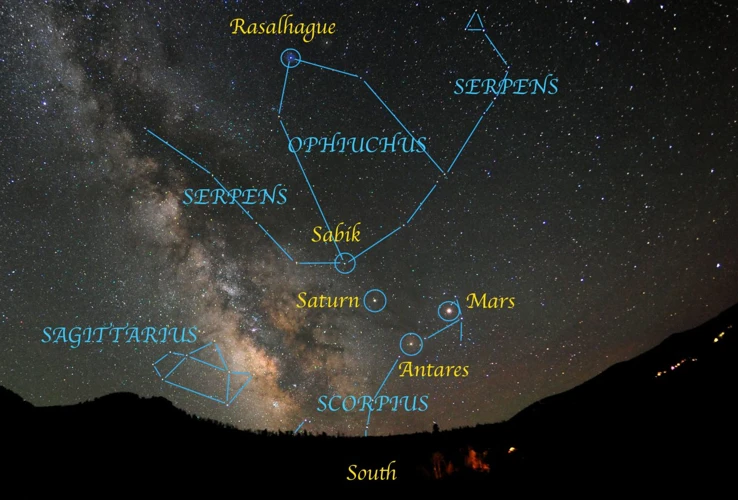
Planetary alignment holds particular significance in the realm of astrology, where celestial patterns are believed to influence human behavior and shape personality traits. In astrology, the Zodiac serves as a key framework for understanding planetary alignment. Each planet is associated with specific qualities and energies, and their alignment in the Zodiac can create powerful influences. Astrologers interpret planetary alignments as indicators of personal strengths, challenges, and potential life events. For example, when multiple planets align in a certain constellation, it can signify a time of transformation or growth. The interpretation of planetary alignments in astrology is a complex art that combines ancient wisdom, symbolism, and intuitive insights. Understanding the interpretation of planetary alignments can provide profound insights into one’s character and life path.
The Zodiac and Celestial Patterns
The Zodiac is a fundamental component of astrology, with each zodiac sign associated with specific celestial patterns. These patterns are formed by the alignment of the planets along the ecliptic, the apparent path of the Sun across the sky. The Zodiac consists of twelve signs, including Aries, Taurus, Gemini, Cancer, Leo, Virgo, Libra, Scorpio, Sagittarius, Capricorn, Aquarius, and Pisces, each representing different personality traits and characteristics. Celestial patterns within the Zodiac play a vital role in astrological interpretations, as they are believed to influence human behavior, relationships, and life events. For example, when multiple planets align within a particular zodiac sign, it is seen as a powerful indicator of the energies and influences associated with that sign. This alignment is thought to enhance and amplify the qualities and traits represented by the sign. However, it is important to note that interpretations of celestial patterns within the Zodiac may vary among astrologers and different astrological systems. It is also worth mentioning that the concept of the Zodiac is not unique to Western astrology; other cultures and civilizations around the world have their own zodiac systems with their own celestial patterns and interpretations.
The Interpretation of Planetary Alignments
When it comes to interpreting planetary alignments, different cultures and belief systems have developed their own unique perspectives. In astrology, the alignment of planets is believed to have an influence on various aspects of human personality and destiny. Astrologers study the positions of the planets at the time of a person’s birth to determine their personality traits, potential challenges, and life paths. Each planet is associated with specific qualities and energies, and their alignment can create a complex web of influences. For example, the alignment of Mars and Venus may be interpreted as a combination of passion and love. In contrast, a conjunction of Saturn and Pluto can symbolize transformation and power struggles.
In addition to astrology, many ancient civilizations attributed significant meanings to planetary alignments. The Egyptians, for instance, believed that specific planetary alignments signified important events, such as the flooding of the Nile River or the ascension of a pharaoh. They considered these alignments as messages from their gods and used them to guide their actions and decisions. The Mayans also placed great importance on planetary alignments and incorporated them into their calendar system. Their observations of the alignment between Venus and the Sun played a crucial role in determining auspicious times for ceremonies and important events.
It’s important to note that interpretations of planetary alignments can vary even within the same cultural context. Astrologers and practitioners may have different schools of thought and perspectives on the significance of certain planetary alignments. Some interpret alignments through a psychological lens, emphasizing personal growth and introspection, while others focus on more predictive or transcendent elements.
Within the field of astronomy, the interpretation of planetary alignments takes a different approach. Astronomers study alignments as an opportunity to observe celestial events and gather scientific data. Alignments can provide insights into the mechanics and dynamics of the solar system, such as gravitational interactions and orbital patterns. These observations contribute to our understanding of the physical properties of celestial bodies and the overall structure of the universe.
The interpretation of planetary alignments encompasses a wide range of perspectives, from the mystical and symbolic to the scientific and empirical. It is an area that continues to evolve as new discoveries are made and as cultures and belief systems intersect and exchange ideas.
Planetary Alignment in Astronomy
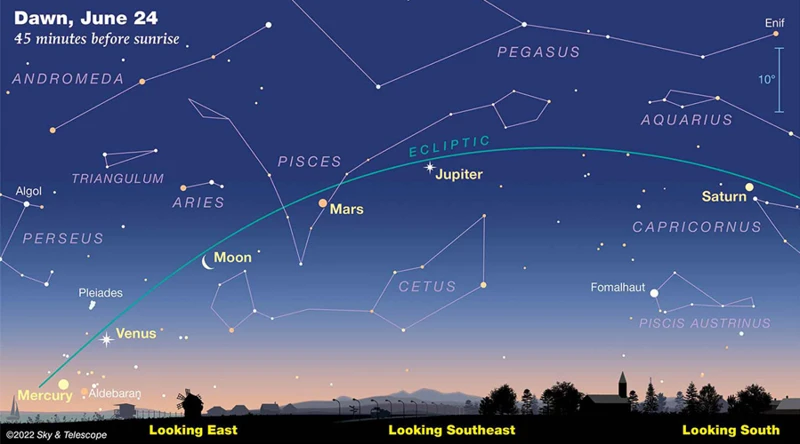
In the realm of astronomy, planetary alignment is studied from a scientific perspective, focusing on the mechanics and observable phenomena of these alignments. Astronomers have unraveled the complexities of planetary motion, explaining how the gravitational forces between celestial bodies cause them to align at specific points in time. Understanding the mechanics of planetary alignment has allowed scientists to make predictions about future alignments and study their significance. Observable alignments, such as conjunctions and oppositions, provide valuable insights into the dynamics of our solar system. These alignments have been used to study the properties of planets, moons, and even asteroids. By analyzing the patterns and positions of aligned planets, astronomers can gain a deeper understanding of our place in the universe and the mechanisms that govern celestial motion.
Mechanics of Planetary Alignment
The refers to the scientific understanding of how and why planetary bodies align in the solar system. It involves the principles of celestial mechanics and gravitational forces that govern the movements of planets. Planetary alignment occurs when two or more planets, as seen from Earth’s perspective, appear to be in a straight line or a specific geometric configuration. This alignment is a result of the planets’ orbits around the Sun and their relative positions in their respective elliptical paths.
The alignment of planets is influenced by several factors, including their orbital periods, distances from the Sun, and gravitational interactions with each other. The concept of orbital resonance plays a significant role in planetary alignment. Orbital resonance occurs when the gravitational forces between planets cause their orbital periods to synchronize or approach integer ratios. This synchronization can lead to recurring patterns of alignment over long periods.
Planetary alignment can take different forms, including conjunctions, oppositions, and elongations. Conjunctions happen when planets appear close to each other in the sky, whereas oppositions occur when planets are positioned on opposite sides of the Sun as observed from Earth. Elongations refer to the maximum angular separation between a planet and the Sun as seen from Earth.
To better understand the mechanics of planetary alignment, astronomers use mathematical models, computer simulations, and observational data. These tools help predict future alignments and study the dynamics of the solar system. While planetary alignments may appear visually striking, they do not necessarily have any direct physical or gravitational effects on Earth or on the planets themselves.
The mechanics of planetary alignment are rooted in the principles of celestial mechanics, gravitational forces, and the complex interactions between planets in the solar system. Understanding these mechanisms allows scientists to predict and study the patterns of planetary alignment, unraveling the cosmic dance that captivates our imagination.
Observable Alignments and Their Significance
Observable alignments of celestial bodies have long fascinated humans, leading to various interpretations of their significance. When it comes to observable alignments and their significance, astronomers and astrologers have looked to the patterns formed by planets, moons, and other celestial objects in the night sky. These alignments can occur in various configurations, such as conjunctions, oppositions, and grand alignments, where multiple planets align in a straight line.
From an astronomical perspective, observable alignments provide valuable insights into the mechanics of our solar system. They allow scientists to study the gravitational interactions between celestial bodies and refine our understanding of their orbits. For example, when planets align in a conjunction or opposition, their gravitational tugs on each other can create subtle but measurable effects on their movements. These alignments help astronomers validate theoretical models and improve our knowledge of celestial mechanics.
In astrology, observable alignments hold symbolic significance and are believed to influence the energetic vibrations that impact human lives. Each planet carries its own astrological symbolism, and when they align in specific patterns, it is believed to amplify or alter the cosmic energies that influence individuals and events on Earth. For example, a conjunction between Mars and Venus might be seen as a potent merging of passion and love, while a grand alignment involving Jupiter, Saturn, and Uranus may be seen as a time of potential breakthroughs and transformations.
While some argue that the significance attributed to observable alignments is purely subjective and lacks scientific evidence, proponents of astrology consider these alignments as powerful cosmic synchronicities that can offer guidance and insight into personal and collective experiences. It is important to note that scientific advancements and observations have proven that observable alignments do have physical and gravitational effects, even if their impact on human lives may still be a subject of debate.
The study of observable alignments and their significance bridges the realms of astronomy and astrology, offering a rich tapestry of interdisciplinary research and cultural interpretations. Exploring the patterns and meanings behind these alignments allows us to appreciate the awe-inspiring beauty of the cosmos and the intricate interconnectedness between the celestial and terrestrial worlds.
Cultural Interpretations of Planetary Alignment
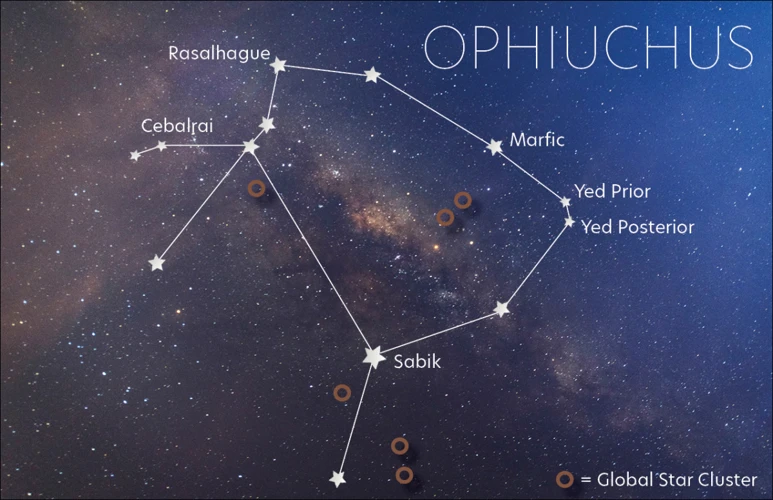
Cultural interpretations of planetary alignment encompass a vast array of beliefs and traditions across different societies. Eastern traditions and philosophies offer unique insights into the significance of planetary alignment, with practices like Feng Shui and Vedic astrology emphasizing the influence of cosmic energies on human well-being. Native American and indigenous cultures also hold rich mythologies and spiritual beliefs surrounding planetary alignment, connecting these celestial events to the cycles of nature, ancestral spirits, and cosmic harmony. In contemporary times, different interpretations have emerged, blending ancient wisdom with new age spirituality and personal growth practices. These interpretations often focus on the alignment’s potential for transformation, healing, and heightened consciousness. While skeptics may dismiss these interpretations as pseudoscience, the depth and variety of cultural beliefs surrounding planetary alignment continue to inspire awe and curiosity among individuals seeking a deeper connection to the cosmos.
Eastern Traditions and Philosophies
Eastern traditions and philosophies have long held a deep reverence for celestial phenomena, including planetary alignment. In Eastern traditions and philosophies, such as Hinduism, Buddhism, and Taoism, the alignment of planets is seen as a reflection of cosmic harmony and balance. In Hinduism, the ancient texts known as the Vedas contain references to planetary alignments and their influence on human life. Astrology, known as Jyotisha, is considered an integral part of Hindu culture and is believed to offer insights into an individual’s destiny and path in life. Similarly, in Buddhism, the concept of interdependence and interconnectedness is emphasized, and planetary alignment is seen as a reminder of the interconnected nature of all things. The alignment of planets is believed to have a direct influence on a person’s karma and spiritual development. Taoism, with its focus on the balance of yin and yang and the flow of energy, sees planetary alignment as a manifestation of cosmic energy and a reflection of the natural order. There are practices within Taoism, such as Feng Shui, that aim to harmonize the energy of spaces and align it with the cosmic forces. Eastern traditions and philosophies view planetary alignment as a means to deepen spiritual understanding, align with cosmic energy, and seek harmony within oneself and with the universe.
Native American and Indigenous Beliefs
Native American and Indigenous beliefs surrounding planetary alignment are diverse and varied, reflecting the rich cultural tapestry of indigenous communities across the Americas. In many indigenous cultures, celestial bodies are considered sacred and hold deep symbolic meaning. The alignment of planets is often seen as a powerful cosmic event that can influence the spiritual and earthly realms. For example, some Native American tribes view planetary alignment as a time of heightened spiritual energy and an opportunity for connection with the spirit world. The alignment of celestial bodies is believed to open pathways for communication with ancestors and spiritual beings. In other indigenous beliefs, planetary alignment is associated with agricultural cycles and the natural rhythms of the Earth. It serves as a guide for planting and harvesting, as well as a marker for important rituals and ceremonies. The Hopi, Navajo, and Lakota tribes, among many others, have passed down oral traditions and astronomical knowledge that highlight the significance of planetary alignment in their cultural practices.
Contemporary Interpretations
Contemporary interpretations of planetary alignment encompass a wide range of beliefs and practices, blending both ancient wisdom and modern perspectives. Many individuals and spiritual communities view planetary alignment as a powerful time for manifestation and setting intentions. They believe that when certain planets align, their combined energy amplifies the manifestation process, allowing individuals to bring their desires into reality. Some modern interpretations also draw connections between planetary alignment and personal growth, suggesting that these celestial events can act as catalysts for transformation and self-discovery. Astrologers may analyze the alignment of planets in real-time to provide guidance and insights into individual and collective experiences. Additionally, some individuals perceive planetary alignment as a reminder of our interconnectedness with the universe, emphasizing the need to cultivate harmony and balance in our lives. It is important to note that contemporary interpretations of planetary alignment vary widely, and individuals may hold different beliefs and practices related to these celestial events.
- Manifestation and Intention Setting: Many view planetary alignment as an auspicious time for setting intentions and manifesting desires.
- Personal Growth and Transformation: Some believe that planetary alignment can catalyze personal growth and self-discovery.
- Astrological Guidance: Astrologers analyze planetary alignment to provide insights and guidance into individual and collective experiences.
- Interconnectedness and Balance: For some, planetary alignment serves as a reminder of our connection to the universe and the importance of cultivating harmony and balance in our lives.
Impacts on Human Consciousness
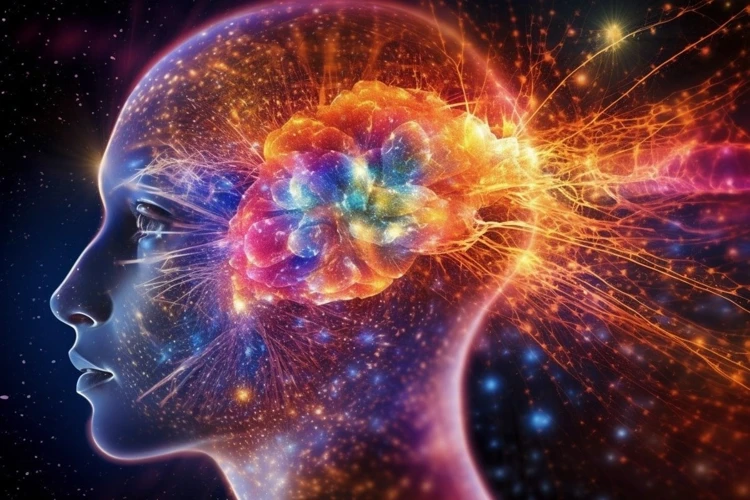
The alignment of planets has long been believed to have profound impacts on human consciousness. Astrologers and spiritualists argue that these alignments can influence our emotions, energy levels, and overall well-being. Some believe that during certain alignments, such as a full moon or rare planetary conjunction, the veil between the physical and spiritual realms is lifted, allowing for heightened intuition and spiritual connections. The psychological effects of planetary alignment can vary widely among individuals, with some experiencing increased clarity and inspiration, while others may feel overwhelmed or confused. These alignments have been linked to shifts in energy and the potential for personal growth and transformation. The connection between planetary alignment and human consciousness remains a subject of ongoing exploration and debate, as scientists and skeptics challenge the validity of these beliefs. However, for those who embrace the mystical and spiritual aspects of these alignments, they offer an opportunity for introspection, self-discovery, and a deeper understanding of the interconnectedness of the universe.
The Psychological Effects of Planetary Alignment
The concept of planetary alignment has long been associated with psychological effects on individuals. While scientific evidence may not directly support a causal relationship between planetary alignment and human psychology, many individuals believe that these celestial events can influence their emotions, moods, and overall well-being. Some people may feel a sense of heightened awareness or a deepened connection to the universe during these alignments. Others may experience a shift in their energy levels or a surge of creativity. It is important to note that these effects can vary widely from person to person, and individual interpretations play a significant role. Astrologers often analyze planetary alignments within the context of an individual’s birth chart to gain insights into personality traits, strengths, and challenges. Some individuals may find comfort or guidance in astrology, using planetary alignments as symbolic markers to navigate personal growth or decision-making processes. It is essential to approach the topic of psychological effects of planetary alignment with an open mind and recognize that interpretations can be subjective.
Spiritual and Mystical Connections
• Spiritual and Mystical Significance:
The alignment of planets has long been associated with spiritual and mystical connections. In various spiritual traditions, planetary alignment is believed to enhance energetic vibrations and create powerful portals for spiritual growth and transformation. It is seen as a reflection of cosmic energy and divine alignment, which can influence human consciousness and facilitate deeper spiritual experiences.
• Astrological Transits and Personal Transformation:
Astrologers interpret planetary alignments as significant moments of transition and growth in an individual’s life. These alignments are believed to have a profound impact on one’s emotions, thoughts, and spiritual journey. For example, during a conjunction (when planets align in the same celestial longitude), energy is said to be concentrated, symbolizing a time of new beginnings or the merging of different aspects of life.
• Divine Timing and Synchronicity:
Many people believe that planetary alignment is no coincidence but rather a result of the universe orchestrating events in perfect harmony. It is thought to be a reminder of the interconnectedness of all things and the cyclical nature of existence. Spiritual seekers often look to these alignments as auspicious moments for manifestation, meditation, and spiritual practices to align their intentions with the cosmic energies at play.
• Planetary Alignments and Sacred Geometry:
Sacred geometry, with its intricate patterns and mathematical ratios, is often associated with planetary alignment. This belief stems from the notion that the planets’ positions create geometric shapes that hold symbolic meaning. For example, the alignment of three planets forming a triangle can represent balance and harmony, while a planetary alignment resembling a cross can symbolize spiritual alignment and transcendence.
• Ancient Wisdom from Astrology and Esoteric Traditions:
Throughout history, esoteric teachings and astrological wisdom have offered insights into the spiritual and mystical significance of planetary alignment. These teachings emphasize the interplay between celestial influences and human consciousness, offering guidance on aligning one’s life with universal energies. It is seen as an opportunity to tap into ancient wisdom and connect with deeper levels of understanding and spiritual awakening.
• Personal Exploration and Connection:
For individuals with a spiritual inclination, planetary alignment can be seen as an invitation to explore their own spiritual path and delve into esoteric practices. It can serve as a catalyst for personal growth, self-reflection, and the deepening of one’s spiritual connection. Many seek solace and inspiration in these alignments, viewing them as reminders of the vastness and mystery of the universe.
The spiritual and mystical connections attributed to planetary alignment encompass a range of beliefs and practices. Whether it is seen as a gateway for spiritual transformation, a reminder of divine timing, or an exploration of sacred geometry, these alignments provide a unique lens through which individuals can connect with the spiritual aspects of their lives.
Controversies and Skepticism
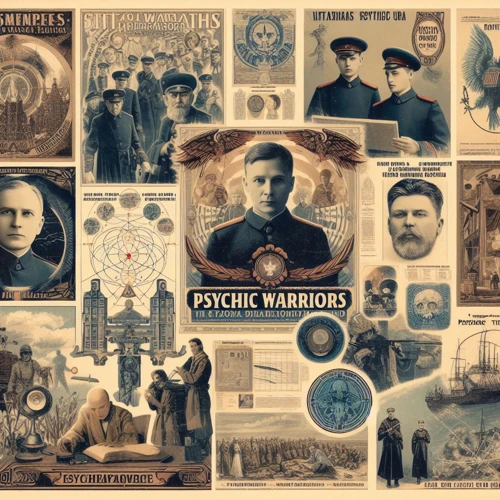
Controversies and skepticism surround the topic of planetary alignment, with various individuals and scientific communities questioning the validity of its claims and interpretations. Scientific criticisms and debunking myths play a significant role in this discourse, as skeptics argue that many assertions made about the effects of planetary alignment lack empirical evidence and are based on pseudoscience. Critics question the ability of planetary alignments to influence human behavior or determine future events. They argue that the gravitational forces exerted by the planets are too weak to have any significant impact on Earth. The influence of pseudoscience further adds to the skepticism surrounding this topic, as unverified claims and misinterpretations often overshadow scientific research. It is important to separate fact from fiction and approach the study of planetary alignment with a critical lens, taking into account empirical evidence and the principles of scientific inquiry.
Scientific Criticisms and Debunking Myths
Scientific criticism and the debunking of myths surrounding planetary alignment have played a crucial role in separating fact from fiction. Skeptics argue that many claims about the effects of planetary alignment on human behavior and world events lack empirical evidence and are instead based on pseudoscience. Some of the common criticisms include the dismissal of astrology as a pseudo-discipline and disputing the alleged correlations between planetary alignments and significant events in history. Critics argue that such correlations are often a result of cherry-picking data or using vague and subjective interpretations. They emphasize the importance of rigorous scientific methodologies, including statistical analysis, control groups, and the need for replication in order to establish valid and reliable claims about planetary alignments. Additionally, skeptics argue that the gravitational forces exerted by the planets during alignment are minuscule and lack the significant impact many proponents claim. They assert that the gravitational effects of the Moon, for instance, have a much more noticeable impact on Earth due to its proximity. While skeptics provide compelling arguments and evidence, it is important to note that debunking these myths does not diminish the cultural and symbolic value that planetary alignment holds for many individuals and societies.
The Influence of Pseudoscience
The study of planetary alignment has not been exempt from the influence of pseudoscience, which refers to practices or beliefs that claim to be scientific but lack scientific evidence or validity. Pseudoscientific ideas surrounding planetary alignment often include claims of supernatural powers, astrological predictions, and the alignment’s influence on personal traits and events. Despite lacking empirical support, these pseudoscientific beliefs have garnered a significant following and have been perpetuated through various means, such as popular culture, internet forums, and astrology-focused publications.
One prominent example of pseudoscience related to planetary alignment is astrology. While astrology can be traced back to ancient civilizations and holds cultural significance for many, it remains a controversial subject in scientific circles. Astrology claims that the positions and movements of celestial bodies, including planetary alignments, can influence human personalities and life events. However, scientific research has consistently found no empirical evidence to support these claims.
The influence of pseudoscience can be seen in the wide availability of astrology-based horoscopes in newspapers, magazines, and online platforms. These horoscopes often claim to provide insights and predictions based on the alignment of the planets at a given time. Despite their popularity, these generic predictions fail to take into account the complex and unique circumstances of individuals, and the scientific community widely dismisses them as baseless.
It is important to critically evaluate and differentiate between pseudoscientific claims and scientifically supported knowledge when exploring the topic of planetary alignment. By promoting scientific literacy and encouraging critical thinking, individuals can navigate the sea of misinformation and separate fact from fiction.
Cross-Cultural Similarities and Differences
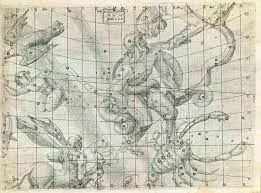
Cross-cultural exploration of the beliefs surrounding planetary alignment reveals both striking similarities and intriguing differences. Various cultures across the globe have developed their own unique interpretations and mythologies around the phenomenon.
Similarities:
1. Divine Connections: Many ancient civilizations believed that planetary alignments were signs of divine communication or intervention. For example, in Egyptian mythology, planetary alignment was seen as a celestial manifestation of the gods’ will and an indication of significant events on Earth.
2. Cosmic Balance: Several cultures viewed planetary alignments as a symbol of harmony and balance in the universe. The alignment of celestial bodies was seen as a reflection of the natural order and the interconnectedness of all things.
3. Timekeeping and Astrology: Across cultures, planetary alignments played a crucial role in timekeeping and astrological practices. Alignments were used as markers for determining auspicious dates, predicting celestial influences on individuals’ lives, and interpreting astrological charts.
Differences:
1. Mythological Figures: Different cultures associated planetary alignments with their own mythological figures and deities. For example, in Norse mythology, the alignment of planets was linked to the actions of gods like Odin and Loki, while Hindu mythology connected planetary alignment to deities such as Brahma and Vishnu.
2. Symbolic Interpretations: The symbolic interpretations of planetary alignments varied across cultures. In Chinese culture, for example, the alignment of Jupiter and Venus was seen as a symbol of love and romance, while in Native American beliefs, planetary alignments held significance in guiding hunting patterns and agricultural practices.
3. Historical Context: Cultural interpretations of planetary alignment were often influenced by the historical context and prevalent beliefs of a specific time and place. For instance, during the Renaissance period, the alignment of planets was often associated with notions of fate, destiny, and the influence of celestial bodies on human affairs.
It is fascinating to explore the diverse ways in which different cultures have perceived and interpreted planetary alignment. These similarities and differences not only highlight the universality of human fascination with the cosmos but also showcase the intricate tapestry of human beliefs and cultural expressions.
The Future of Planetary Alignment Studies
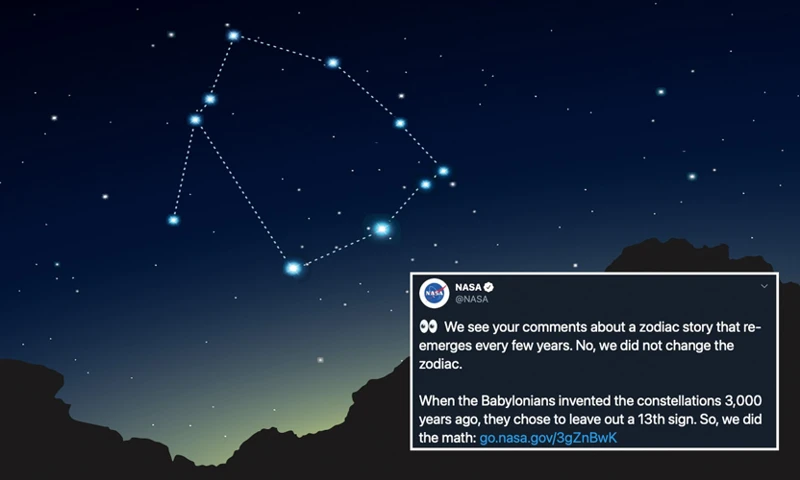
The future of planetary alignment studies holds great potential for further exploration and understanding of the cosmic phenomena that have fascinated humanity for centuries. As technology continues to advance, scientists, astronomers, and astrologers are gaining access to new tools and data that allow for more accurate observations and detailed analysis of planetary alignments.
In the field of astronomy, advancements in telescopes, space exploration, and computer modeling have already revolutionized our understanding of planetary motion and alignment. With the launch of missions like NASA’s James Webb Space Telescope, scientists anticipate capturing breathtaking images and collecting valuable data that will enhance our knowledge of planetary alignment and its effects on the universe.
Similarly, astrologers are utilizing advanced software and computational tools to generate more precise birth charts and predictions based on planetary alignments. This merging of traditional astrological practices with modern technology allows for deeper insights into the influence of planetary alignments on individual lives and society as a whole.
Interdisciplinary collaborations between astronomers, astrologers, psychologists, and anthropologists can provide a holistic approach to understanding the psychological, cultural, and spiritual aspects of planetary alignment. These collaborations pave the way for groundbreaking research and a more comprehensive understanding of the impacts of planetary alignment on human consciousness and behavior.
In the future, there is also potential for the integration of artificial intelligence (AI) and machine learning algorithms to analyze vast amounts of data and identify patterns in planetary alignments that may have previously gone unnoticed. This could lead to new discoveries and insights into the cosmic dance of the planets and its broader significance.
As we look ahead, it is clear that the future of planetary alignment studies is filled with promise and excitement. Through the continued exploration of ancient wisdom, technological advancements, interdisciplinary collaboration, and the curiosity of human minds, we are on the brink of uncovering even more profound insights into the mysteries of planetary alignment and its role in our universe.
Conclusion

After exploring the mythical beliefs, cultural interpretations, and scientific aspects of planetary alignment, we can draw some intriguing conclusions. First and foremost, planetary alignment holds immense cultural and historical significance across civilizations. From ancient mythologies to contemporary beliefs, humans have projected their understanding of the cosmos onto these celestial events. These interpretations often reflect their values, fears, and aspirations, providing a glimpse into the collective consciousness of different societies.
Furthermore, while astrology and astronomy have divergent methodologies, they both seek to comprehend the cosmos and its impact on human experience. Astrology allows individuals to find meaning and personal significance in planetary alignments, offering a framework for self-reflection and guidance. On the other hand, astronomers focus on the mechanical and observable aspects of planetary alignment, contributing to our scientific understanding of the universe.
However, it is important to acknowledge the controversies, skepticism, and debunking of certain supernatural claims associated with planetary alignment. Scientific criticism and the influence of pseudoscience raise questions about the validity of some cultural interpretations. Nonetheless, the cross-cultural similarities and differences in these beliefs highlight the diversity of human experience and the universal fascination with the celestial realm.
As we look to the future of planetary alignment studies, advancements in technology and astronomical observation will continue to deepen our understanding. Areas such as astrobiology and exoplanet research offer promising avenues for exploration, pushing the boundaries of our knowledge and challenging existing beliefs.
In conclusion, planetary alignment bridges the realms of mythology, astrology, and astronomy, weaving a complex tapestry of human fascination and understanding of the cosmos. The study of these alignments not only provides insight into ancient civilizations and cultural interpretations but also expands our scientific understanding of the universe. Whether one approaches it from a mystical, scientific, or philosophical perspective, the phenomenon of planetary alignment continues to captivate our imaginations and invites us to contemplate our place in the vastness of the cosmos.
Frequently Asked Questions

What is the significance of planetary alignment in mythology?
Planetary alignment holds great significance in mythology as it is often associated with the actions and influences of gods and cosmic forces. These alignments are believed to have a direct impact on the destiny and fate of individuals and civilizations.
Can planetary alignment predict future events?
While some may believe that planetary alignment can predict future events, there is no scientific evidence to support this claim. However, astrology utilizes planetary alignment as a tool for interpreting personality traits and providing general insights into one’s life.
What is the difference between astronomy and astrology?
Astronomy is a scientific field that studies celestial objects, their positions, and their properties. Astrology, on the other hand, is a belief system that interprets the influence of celestial bodies on human behavior and events.
Do all planets align in a straight line during planetary alignment?
No, planetary alignment does not require all planets to align in a straight line. The term refers to the alignment of planets along a similar plane in their respective orbits, which may or may not form a straight line.
What are the cultural interpretations of planetary alignment in Eastern traditions?
In Eastern traditions, planetary alignment is often associated with concepts such as karma, energy flow, and the balance of yin and yang. It is believed that these alignments can bring about positive or negative influences on individuals and society as a whole.
Are there any spiritual or mystical connections to planetary alignment?
Many people attribute spiritual and mystical connections to planetary alignment, viewing it as a cosmic event that holds a deeper meaning beyond the physical realm. Some believe that it can enhance intuition, spiritual awakening, and the alignment of one’s energy.
What are some scientific criticisms of planetary alignment beliefs?
Scientists often criticize planetary alignment beliefs due to the lack of empirical evidence supporting their claims. They argue that the gravitational pull of planets is relatively weak and cannot significantly influence human behavior or events on Earth.
Are there any commonalities in the interpretations of planetary alignment among different cultures?
Yes, while cultural interpretations of planetary alignment may vary, there are commonalities in the belief that these alignments hold symbolic meaning and can impact human lives. Many cultures associate planetary alignment with significant events, spiritual awakenings, or shifts in collective consciousness.
How does planetary alignment impact human consciousness?
Some individuals believe that planetary alignment can have a profound impact on human consciousness, leading to heightened awareness, intuitive insights, and shifts in perception. However, these claims are largely subjective and not supported by scientific evidence.
What is the future of planetary alignment studies?
The future of planetary alignment studies remains uncertain. While scientific research will continue to explore the mechanics and patterns of planetary alignment, cultural interpretations and beliefs surrounding these alignments are likely to evolve and adapt to the changing worldview of humanity.
References
- Interpreting 5 Ancient Constellations Across Cultures
- Planetary Motion: The History of an Idea That Launched …
- Astronomy in Ancient Cultures: Early Star Interpretations
Frequently Asked Questions

What is planetary alignment?
Planetary alignment refers to the rare phenomenon where multiple planets in our solar system appear to be in a straight line when viewed from Earth. This alignment occurs due to the unique positioning and movement of the planets along their individual orbits.
How often does planetary alignment occur?
Planetary alignment is a relatively rare occurrence. The exact frequency depends on the specific alignment being considered. While some alignments may occur every few years, others may only happen once in several decades or even centuries.
Do planetary alignments have any significant effects on Earth?
While the gravitational forces exerted by planets during alignment can have minimal effects on Earth, they are generally too weak to cause any significant changes in our daily lives. Planetary alignments are mostly observed for their astronomical and symbolic value rather than their direct impact on our planet.
What are some ancient beliefs and myths associated with planetary alignment?
Ancient civilizations attributed great symbolism and power to planetary alignments. They believed that these alignments signaled important celestial events, divine interventions, or even the birth of gods. Many cultural myths and creation stories revolve around the significance of planetary alignment.
Can planetary alignments affect human behavior and emotions?
While some people claim that planetary alignments can affect human behavior and emotions, there is no scientific evidence to support this notion. The belief in such effects is commonly associated with astrology and New Age spirituality rather than empirical research.
How does astrology interpret planetary alignments?
Astrology views planetary alignments as meaningful celestial configurations that influence human personality traits and life events. Astrologers analyze these alignments within the context of the zodiac to make predictions and provide guidance regarding various aspects of an individual’s life.
Are there observable planetary alignments that astronomers study?
Astronomers study observable planetary alignments to better understand the mechanics and dynamics of our solar system. By observing and tracking these alignments, scientists can refine their models and theories about planetary motion, gravitational interactions, and orbital mechanics.
What are some cross-cultural interpretations of planetary alignment?
Various cultures around the world have their own interpretations of planetary alignments. For example, Eastern traditions often associate planetary positions with the balance of yin and yang energies, while Native American cultures perceive alignments as significant markers for seasonal changes, rituals, and spiritual practices.
What are some controversies surrounding planetary alignment beliefs?
Many scientists are skeptical of the claims made by astrologers and New Age practitioners regarding the effects of planetary alignments on human lives. Critics argue that these beliefs lack scientific evidence and are often based on pseudoscience, leading to misunderstandings and false interpretations.
What does the future hold for planetary alignment studies?
As our understanding of the universe continues to evolve, so will our knowledge of planetary alignments. Advances in technology and space exploration will enhance our ability to study and analyze these phenomena, uncovering new insights into the mechanics, symbolism, and cultural significance of planetary alignment.







